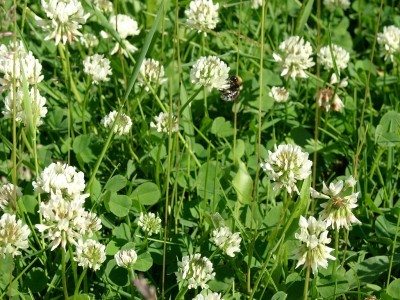Clover in lawns
Clovers can be a persistent nuisance in lawns, surviving even close mowing and, in some cases, having a strong resistance to weedkillers. They are easily recognised by their trifoliate (3-leafed) leaves.
Appearance


White or Dutch clover (Trifolium repens) is comparatively large-leaved and has an open habit of growth. The flowers are white or pink.
Lesser yellow trefoil (Trifolium dubium), a member of the clover family, is a small-leaved, annual weed. It forms a flattened, roughly circular mat of interlaced stems, with tiny trifoliate leaves. Many small multiple heads of pale yellow flowers are produced throughout the summer months.
White or Dutch clover may be encountered on all types of soil but is more commonly found on medium to heavy alkaline soils. Its roots form readily along the creeping, spreading stems.
Lesser yellow trefoil is usually most troublesome on lighter, sandy soils, particularly where the grass is weak through lack of regular feeding. It forms a deeply penetrating tap root, seeds freely and if scattered plants are ignored, large colonies quickly form. It survives close mowing – a practice which can further weaken turf on poor soils.
Control
Cultural control can work to a degree. Removing weeds by hand, ensuring the lawn is well fertilised to ensure thick grass and limited space for weeds to grow.
Clover is relatively susceptible to dicamba, and mecoprop-P. Products containing fluroxypyr are particularly good at control.
All are applied safely by Cheshire Lawn Doctor.